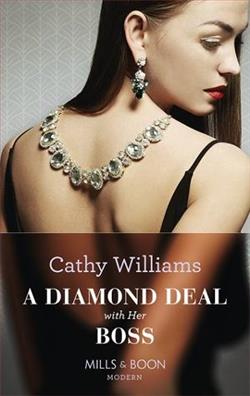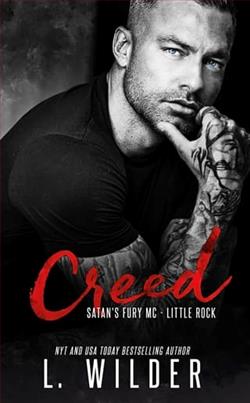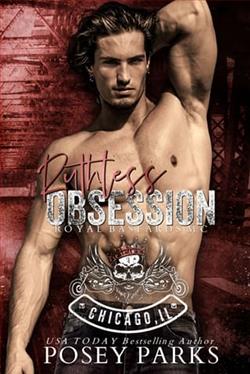Page 54 of Holmes, Margaret and Poe
“Visiting his mom in Arizona, but he said you can look at the plane if you’d like. He hasn’t flown it since.”
“We might do that,” I said. “Tell us about Lunt knowing where he is in the air.”
Toof said, “He knew where he was when he was shot at.” She crossed a bridge over the Pee Dee River and pulled off the road. We all got out.
“Lunt says he was four miles north of this bridge, about two thousand feet up, early morning. Little foggy, you know. He picks up tracers coming at him from his ten o’clock about a mile out, then he gets hit by three rounds. He goes into a dive and does evasive maneuvers to get the hell out of there.”
“He reports it to air traffic control in Charlotte?” Mahoney asked.
“Within seconds of him getting out of range. Gave his GPS position then too.”
I asked, “Did he know where the shooter was?”
“Lunt and I worked at that, factoring in his speed, the dive, the GPS location at that point, the altitude, and the weather conditions,” she said, moving back toward the squad car. “That got me close, but I went up there and found exactly where the shooter was. The gun, anyway. I’ll take you there.”
CHAPTER 50
DETECTIVE TOOF DROVE USfarther east on the highway, then turned north on Liberty Church Road, a two-lane paved affair that headed north through dense woods that were part of the Uwharrie National Forest. Here and there we saw small farms, homes, and cabins; inholdings, Toof said.
About twenty minutes later, we headed back west toward the Pee Dee River. We ended up taking a dirt road that climbed through denser forest and up a ridge.
She pulled the Cherokee off the road just shy of the top of the ridge and onto a two-track that led to a house of sorts, built out of big steel shipping containers, twenty-four of them by Toof ’s count. Beaufort got out of her car and followed us.
Six stacks of two containers each were set in a two-by-three pattern that formed the middle of the structure. The othertwelve boxes were stacked three high and two deep at either end of the first twelve, and all featured slit windows.
The double door dead center of the structure was shielded by a plate of steel three inches thick, ten feet high, and six feet wide. It was welded to two stout posts driven into the ground about three feet from the door.
“It’s like a fortress,” Mahoney said.
“That was the idea,” Toof said, getting out of the car.
“Prepper?” I asked as I got out.
“Big-time prepper,” she said.
“Is that police tape?” Mahoney asked, gesturing at the front doors.
“We’re getting a little ahead of ourselves, Agent Mahoney,” she said. “I want you to see where the shots were taken first. I think it’s important you understand that before I explain what happened here.”
“Okay,” Ned said. “Where were the shots taken?”
She pointed behind the mini-fortress to a gray cliff rising above the far trees. “Up there.”
A half hour later, Mahoney, Toof, Beaufort, and I were hiking our way up the last switchback before the ridgetop and the cliff.
“You think someone dragged a fifty-caliber machine gun up here?” I asked, breathing hard and telling myself I had to get a run in one of these days.
“No,” the detective said. “I think they brought it up on the back of a side-by-side ATV that belonged to Leslie Parks, a conspiracy-theory-spouting wack job who bought the land and built the fortress of solitude down there that, among other things, gave him private access to a whole lot of remote national forest where he could shoot to his heart’s content.”
“You said you thoughttheybrought it up,” Mahoney said. “Parks and who else?”
“I’m getting there,” she said as we crested the ridge and followed her to the edge of the cliff, which was perhaps sixty feet high and looked west toward the river about a mile away. She stopped and said, “Lunt was out there flying at one o’clock.”
“Quartering to,” Agent Beaufort said.
Mahoney and I looked at her.
Beaufort said, “That’s almost the same angle the jet was shot at, sir.”















